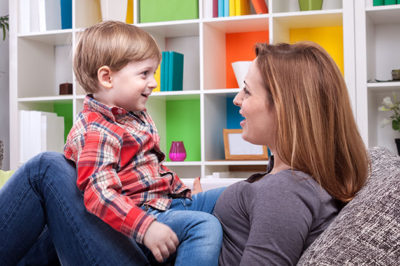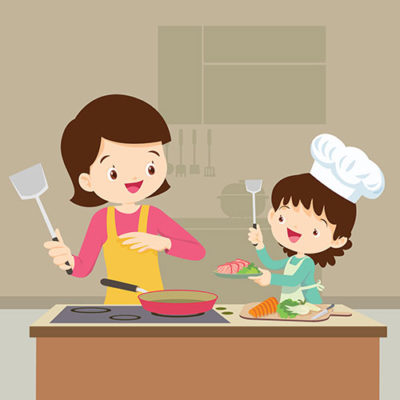Below you will find stories, songs, activities, and lesson plans about activities we do every day. These complement your On My Way to Kindergarten activity book and help practice skills to master before kindergarten. They work great for one child, a small group, or an entire classroom!
Try the Molina 1-1-1: choose 1 story, 1 song, and 1 activity. This will give little ones lots of opportunities to practice skills while learning about everyday activities. You can stick with Everyday Activities for a few days, or try some of our other activity areas like Fun Things to Make and Do, Numbers and Counting or Three Little Pigs.
Do you have more ideas of activities, stories or songs we might include? Click here to share. If your recommendation is chosen to add to our website, we’ll give you credit and send you a gift!
Stories
The best stories are those that you share together.
- Read a book. Sit together, hold the book, introduce the title and author, and turn the pages.
- Tell a story. Make up a story, talk about your day, or tell a family story.
- Visit the library. You can borrow books, for free, from your local library – or you can read a story there. Many libraries have a free activity called “storyhour” where librarians read stories to young children. Some storyhours also have songs or crafts. Ask the librarian about storyhours at your library.
We found a few stories about everyday activities that you can watch together. Pause the story and look at the pictures. Ask questions about the stories or pause when a question is asked in the story – that is how little minds learn! Try questions like: What is this? Who is that? What do you think happens next? What did we just learn?
All by Myself! (4:17 minutes)
Ice Cream Soup (7:27)
If You Give a Mouse a Cookie (5:53 minutes)
How Do Dinosaurs Clean Their Rooms? (1:21 minutes)
Huevos Verdes con Jamon (6:20)
Froggy Gets Dressed (4:30)
Songs
Singing songs can help teach new ideas to little minds. Make up your own songs or try some of these to learn more about everyday activities. Listen to songs over and over again – and sing along with children. For faster songs it can help to pause the song and review the words with your little one. Making up dances and hand motions makes songs even more fun!
Our Whole Names (2:56 minutes)
Buenos Días
Where Do You Live Song
El Patio de Mi Casa
Good Morning Song Sing-Along
Cu Cú
Brush Your Teeth
Que Llueva, Que Llueva
Dress Up Game Song
Soy una Taza
Dress Up with Daniel Tiger
Huevos Sorpresas Mágicos Show de la Piscina de Pelotas | Diversión ChuChu TV Sorpresa
Cooking Song
Arroz con Leche
Canciones Infantiles las Mejores para Aprender Cantando
Playlist
Stuck in a car for a while? Sitting in the waiting room? Waiting at the bus stop? We have built a playlist on YouTube with songs and stories all about the Body and Senses.

Games and Activities
Children learn by doing. Here are activities you can do together to help learn about everyday activities. Simple steps like stirring, cutting, pasting, gluing, and tracing are important – even if an adult can do them faster, it is more important that children practice these skills.
Make Playdough
Playdough is fun to make together! Try using cookie cutters, or other kitchen utensils, on your new playdough to make it even more fun.
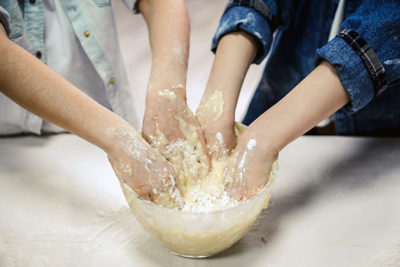
Recipe #1: No-Cooking Playdough
You’ll need:
- Large bowl
- Big spoon
- 2 cups of plain flour
- 1 cup of salt
- 1 tbsp of oil
- 1 cup of cold water
- 2 drops of food coloring
- In a bowl, stir together the flour and salt. (This is a great step for little hands!)
- Add water, food coloring, and oil. Mix with the big spoon until ingredients are combined.
- Knead the dough mixture well. If the consistency is too wet, add a little more flour.
Recipe #2: Playdough on the Stove
You’ll need:
- Medium pot that can be used on the stove
- Large wooden spoon
- 1 cup of plain flour
- ½ cup of salt
- 2 tablespoons of cream of tartar
- 1 cup of water
- 2 teaspoons of food coloring
- Mix together the flour, salt and cream of tartar into a medium pot.
- Stir in the water and food coloring.
- Cook over medium heat and stir (3-5 minutes) until it looks like a very wet, blobby mess. Keep cooking it until it’s not too wet.
- Remove from the stove and let it cool.
- Store in an air tight container.
Recipe #3: Edible Peanut Butter Playdough
NOTE: Some children are very allergic to peanuts, peanut butter, and honey. Before you make this recipe with your child, or share it with another child, please talk with their parents about any food allergies they may have.
You’ll need:
- Medium bowl that can go in the microwave
- Large spoon
- 1 cup of smooth/creamy peanut butter
- 2 cups of powdered sugar
- ½ cup of honey
- Wash and dry your hands.
- Mix all the ingredients together. Use a spoon to stir and stir everything together.
- If the mixture seems too dry, stick it in the microwave for a few seconds to melt the peanut butter a bit.
- Once it’s stirred together, start kneading it between your fingers. It will change texture until it’s a perfect consistency.
- The best part is that you can eat this playdough at the end!
Practiquen Mas Actividades Durante La Vida Diaria
Platiquen Lo Que Ven Y Lo Que Hacen.
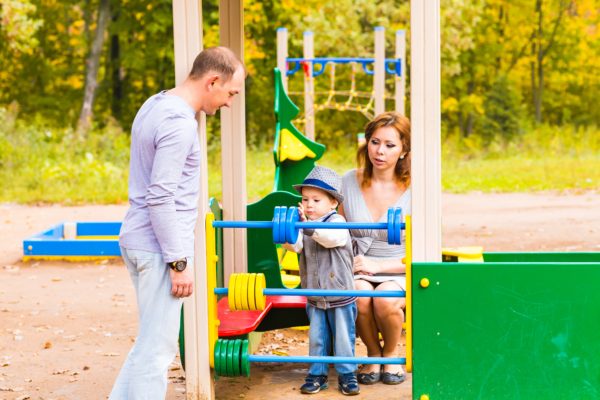
Platiquen mientras maneje, caminen, estén en el parque jugando, o viajen en autobús con su niño (a).
Empiezen contando los árboles y los autos que ven en la calle, hablen de las letras en los anuncios, describan lo que ustedes estén haciendo o a dónde se dirigen, etc.
El desarrollo del vocabulario de los niños desde que son pequeños, ayudará a que aprendan a leer cuando estén en la escuela.
Make a Sensory Bin
A tub with rice and toys, also known as a “sensory bin,” can help strengthen touch, sight, and hearing senses. This can help young brains make important connections!
- Find an empty bin. A shallow container with a lid works well. You could use a piece of Tupperware, butter tub, or an aluminum pan.
- Fill your bin about 1/3 full with rice.
- Bury small items in the rice. Consider using things like: shells, small rocks, buttons, beads, small kitchen utensils, small plastic toys, etc.
- Add some digging tools to help your child sift through the rice. You can use things like jelly jars, scoops, toilet paper rolls, and small cups.
- Start playing! Sit with your child and ask them to dig through the bin to find certain objects.
- Ask your child what textures they feel, and to use their senses to guess what objects they found.
- Keep playing until your child has uncovered all the objects in the bin!
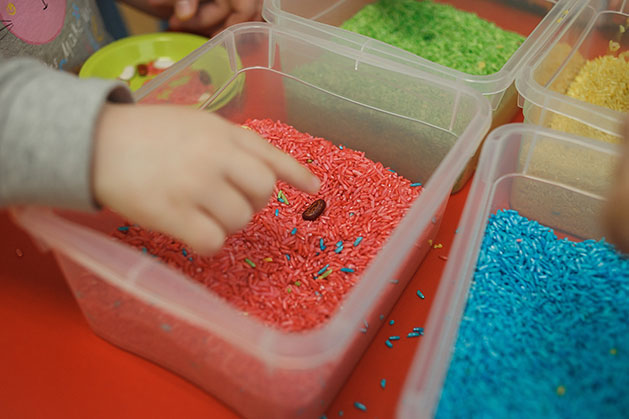
Aprendiendo en la Cocina

En la cocina pueden jugar “veo algo que tú no ves y su color es ______”. Su niño (a) podrá decirle lo que él (ella) piense que usted está viendo y que corresponda con la descripción mencionada.
Al regresar del mercado, pídale a su niño (a) que vaya nombrando cada uno de los alimentos que saca de la bolsa, eso le ayudará a reconocerlos.
Al haber sacado todo de las bolsas y sea momento de organizar y clasificar los alimentos, dígale que reúna y separe cada uno de ellos. Por ejemplo, verduras, frutas, empaques de comida, latas, etc.
Al momento de guardar las latas, pregúntele el tamaño de cada una de ellas, si son pequeñas, grandes, medianas, etc.
Todas estas actividades permiten que su niño (a) desarrolle su atención a los detalles.
Play Hopscotch
Let’s get moving outside! Round up some chalk, something to toss, and a friend!
- Use chalk to draw out a hopscotch course on the sidewalk. A hopscotch course typically looks like a series of 10 numbered squares that alternate between 1 single square to 2 side by side squares.
- The first player tosses a marker, typically a rock or a coin, into the first square.
- The player then hops through the course, making sure to skip the square with the marker in it. Players hop in single squares with one foot (either foot is fine), and use two feet for the side by side squares, one in each square.
- Upon completion of the hop sequence, the player continues her turn, tossing the marker into square number two and repeating the pattern.
- Players lose their turn when they step on a line, miss a square when tossing the marker, or lose balance.
- Players begin their next turn where they last left off.
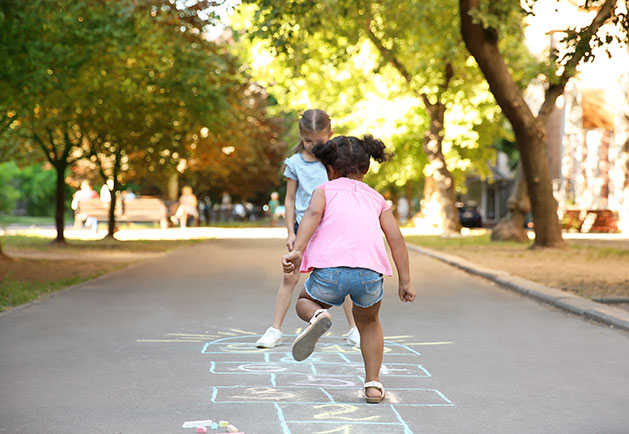
Aprendiendo en la Recámara
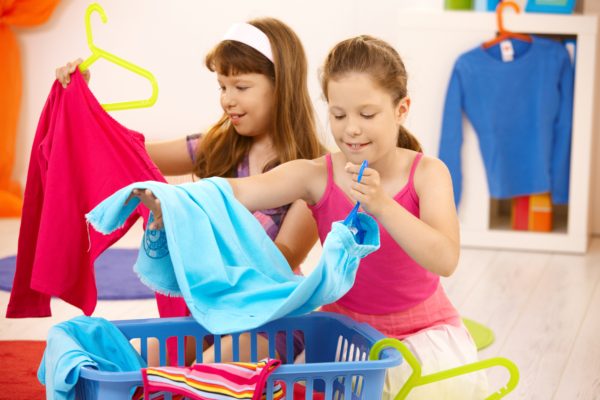
Pídale a su niño (a) que amontone la ropa en un sitio y que la clasifique de acuerdo a al tipo de prenda. Por ejemplo, los calcetines en un lugar y la ropa interior en otro.
Al momento de doblar la ropa para guardarla en el clóset, pídale que separe las prendas de cada uno de los integrantes de la familia. Por ejemplo, los pantalones de papá en un lado, los de mamá en otro, y los de él (ella) en otro.
Pídale que ponga los zapatos o los calcetines con su par, así aprenderá a asociar cosas que son iguales.
Permíta que su niño (a) se vista solo (a) y con varias opciones. No importa si al final se viste de varios colores y de forma desordenada ya que a final de cuentas, todo lo hizo él (ella). Pregúntele también por qué eligió esas prendas para vestir.
Descríba cada una de las prendas que él (ella) tiene en su closet y anímelo (a) a que las conozca bien.
Normalmente los niños se ponen la ropa al revés, y para evitar eso, platique con ellos acerca de la parte de adelante y de atrás de cada prenda de vestir para así evitar confusiones.
Play Simon Says
This game is perfect for practicing body parts while having a great time. To play you will need at least three players, but the more the merrier!
- One person is designated as “Simon”, and the others are the players.
- “Simon” tells players what they must do. However, the players must only obey commands that begin with the words “Simon Says.” For example, if Simon says, “Simon says touch your leg,” then players must touch their leg. But, if Simon simply says, “hop,” without first saying “Simon says,” players must not hop.
- If players obey commands that do not begin with “Simon says”, they are out of the game.
- To help your child to learn from this game, take on the role of Simon and ask your child to identify their body parts. For example, you can say “Simon says touch your ear”, prompting your child to figure out where their ear is.
- The last player standing wins and becomes the next Simon.
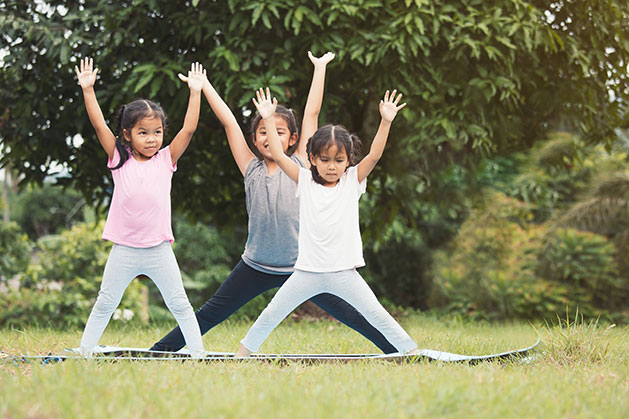
Aprendiendo Fuera de Casa

En el momento que esté con su niño (a) caminado por el parque, pídale que camine lento, rápido, o que corra con cuidado, esto ayudará a desarrollar su habilidad motriz.
El mercado es uno de los sitios favoritos, para enseñarle a su niño (a) la forma, color y tamaño de cada alimento al igual que su uso mientras lo van poniendo en el carrito de compras.
Recomendamos que mientras estén formados en la fila del mercado, le haga preguntas en las cuales ellos puedan usar su imaginación. Por ejemplo, “Hoy habrá un gran banquete en casa y a ustedes les toca hacer el menú” ¿Qué les gustaría cocinar? Platique con su niño (a) y pregúntele cuál es su comida favorita.
Host a Stuffed Animal Snack Time Picnic
You’ll Need:
- Stuffed animals
- Tablecloth, towel, or sheet
- Cups
- Plates
- Utensils (e.g. forks, spoons, knives)
- Napkins
- Small serving bowls for snacks
- Large pitcher
- 2-3 snacks (e.g. cheese, crackers, fruit, vegetables, pretzels)
- A drink for your picnic (e.g. lemonade, water, juice)
- Decide which stuffed animals, kids, and grownups to invite to the picnic.
- Find a place for the picnic. Lay the tablecloth, towel, or sheet on the ground. Pretend this is a table.
- Set the “table.” Put a plate, cup, napkin, and utensils at each spot for your guests.
- Put each snack into separate serving bowls, and put it in the center of the table.
- Pour drinks into a pitcher. Put it on the table.
- Invite the guests to take a seat at your table.
- Help serve each guest snacks and drinks.
Enjoy your picnic!
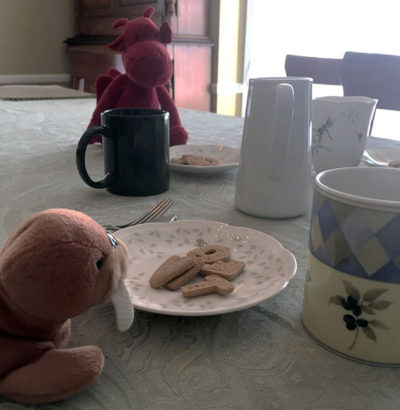
Aprendiendo en Todo Momento
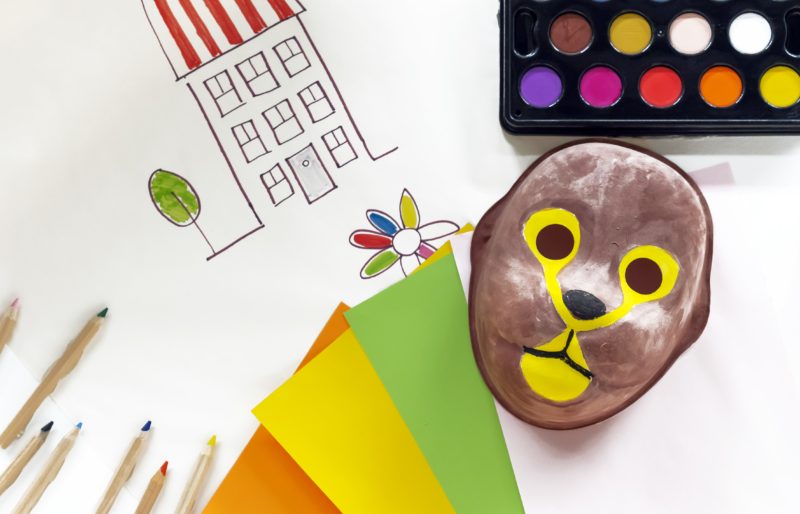



Algunas de las actividades que contribuyen al desarrollo mental y emocional de los niños y mejoran su atención e inteligencia al ser practicadas en cualquier momento del día son:
• El crear máscaras con cartulina de personajes, animals, etc. y jugar a disfrazarse.
• El jugar con sus caritas favoritos y mostrar emoción en ello. Por ejemplo, tome el juguete de peluche que más le guste y dígale: “Mira que feliz está el osito”.
• El jugar a hacer muecas. Por ejemplo, dígale a su niño (a) que haga una cara triste, después una cara feliz, etc. y más adelante usted haga la cara que él (ella) le pida.
• El mostrarle fotografías de álbumes familiares y platicarle acerca de lo que ven. Por ejemplo, cuando vea una foto de él (ella) cuando era un bebé y estaba durmiendo, dígale: “Mira, aquí estás tú cuando tenías un añito, estabas muy cansado (a) y dormiste bastante”.
Play Kid Chef
Try these fun, easy and playful recipes for snacks to make together.
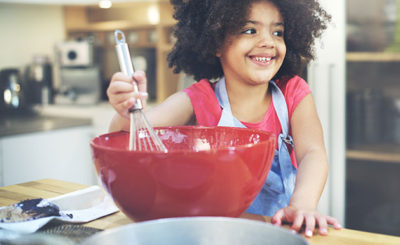
Play the High Five Game

Try this fun game to practice memorizing addresses and phone numbers.
You’ll Need:
- Markers
- Construction paper, cardboard, or old cereal boxes
- Scissors
- Tape
- Trace your child’s hand 8 times onto the construction paper or cardboard. (You’ll need 9 if you have an apartment number in your address.)
- Cut out your tracings.
- Prepare the materials.
- Phone number.
- Choose 3 hands.
- On the palm of the first hand, write your area code.
- On the palm of the second hand, write the next 3 digits of your phone number.
- On the palm of the third hand, write the last 4 digits of your phone number.
- On a blank piece of paper, or square strip of cardboard, write “My Phone Number.”
- Phone number.
- Address:
- Choose 4 hands (5 if you have an apartment number).
- On the palm of the first hand, write your house number.
- On the palm of the second hand, write your street name.
- On the palm of the third hand, if applicable, write your apartment number.
- On the palm of the next hand, write your city name.
- On the palm of the next hand, write your state’s full name.
- On the palm of the last hand, write your country (e.g. USA)
- On a blank piece of paper, or square strip of cardboard, write “My Address.”
- Find two doors in your house that your child must regularly open or a hallway they pass frequently. For example, the inside of the front door, the door to their room, the refrigerator or cupboard, the bathroom door, etc.
- On the first door, hang the sign that says “My Phone Number” and then – at an easy height to reach – tape the hands for the phone number. Repeat on a different door with the address information.
- To Play: The child must ‘high five’ each hand every time they go in/out of the room reciting what’s written on each hand. They can practice “reading” the numbers or just memorizing the information.
Make Up an Address and Phone Number Song
Making up a song to practice your address and phone number. Try this example to the tune of “Frere Jacques” here.
To start, have the adult ing the first line and the child repeat. For example:
Address:
Adult: 1-2-3-4
Child: 1-2-3-4
Adult: Main Street
Child: Main Street
Adult: Washington, DC
Child: Washington, DC
Adult: 22204
Child: 22204
Phone:
Adult: 555
Child: 555
Adult: 444
Child: 444
Adult: 5432
Child: 5432
Adult: That’s Mom’s phone
Child: That’s Mom’s phone
Eventually, you’ll all be humming your contact information all the time!
